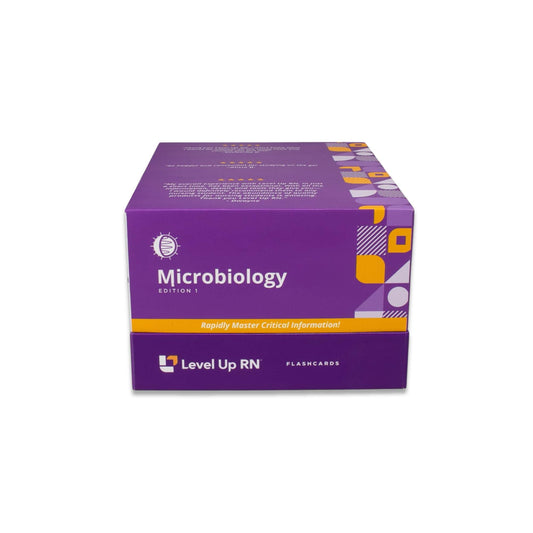Microbiology, part 52: Control of Growth - Microbial Control - Chemical Methods
Chemical methods of controlling microbial growth. Includes: phenolics, heavy metals, halogens, alcohols, surfactants, bisbiguanides, alkylating agents, peroxygens, supercritical fluids, and chemical food preservatives.
Quiz Questions
Chlorine is an example of which of the following: halogen, phenolic, peroxygen, bisbiguanide, or surfactant?
Chlorine is an example of which of the following: halogen, phenolic, peroxygen, bisbiguanide, or surfactant?
Laundry detergent is an example of which of the following: halogen, phenolic, peroxygen, bisbiguanide, or surfactant?
Laundry detergent is an example of which of the following: halogen, phenolic, peroxygen, bisbiguanide, or surfactant?
Hydrogen peroxide is an example of which of the following: halogen, phenolic, peroxygen, bisbiguanide, or surfactant?
Hydrogen peroxide is an example of which of the following: halogen, phenolic, peroxygen, bisbiguanide, or surfactant?
Full Transcript: Microbiology, part 52: Control of Growth - Microbial Control - Chemical Methods
Full Transcript: Microbiology, part 52: Control of Growth - Microbial Control - Chemical Methods
Hi, I'm Cathy with Level Up RN. In this video, we'll be talking about chemical methods for controlling microbial growth. And at the end of the video, I'm going to give you guys a little quiz to test your understanding of some of the key facts I'll be covering. So be sure to stay for that. And if you have our Level Up RN Microbiology flashcards, go ahead and pull out your flashcards so you can follow along with me. First up, we have phenolics. Phenolics are chemical compounds that are primarily derived from plants. They inhibit microbial growth by denaturing proteins and disrupting membranes in microbes. Phenolics are used in a variety of everyday products, such as household cleaners, mouthwashes, and antibacterial hand soaps.
Heavy metals such as silver, mercury, nickel, copper, and zinc have been used as antimicrobial agents for centuries. They inhibit microbial growth by denaturing proteins and inhibiting enzyme activity. Examples of how heavy metals are used for their antimicrobial properties include the use of copper on door handles to help minimize the spread of microbes, as well as silver sulfadiazine, which is used on burns to help prevent infection. Halogens are chemical compounds that act as strong oxidizing agents, causing damage to cellular components and disrupting cellular processes. Some common examples of halogens include chlorine, which is used as a water disinfectant, as well as iodine, which is used as a disinfectant, as well as an antiseptic. Alcohols are chemicals that rapidly denature proteins, inhibit cell metabolism, and alter membrane permeability, which leads to cell lysis and death. However, it's important to note that alcohols are not effective against endospores or non-enveloped viruses. Some common products that use alcohol include hand sanitizer as well as rubbing alcohol. Next, we have surfactants, which are a group of chemical compounds that lower the surface tension of water. So they lift away dirt and microbes from surfaces and skin. Some common examples of surfactants include soaps and detergents.
Bisbiguanides are topical antiseptics that disrupt cell membranes. A common example of bisbiguinide is chlorhexidine, which is used for surgical hand scrubbing as well as patient skin preparation before a surgical procedure. Next, we have alkylating agents, which are strong disinfecting chemicals that damage DNA and therefore inhibit replication and transcription. Examples of alkylating agents include formaldehyde, which is used in the storage of tissue samples, as well as glutaraldehyde, which is used to disinfect medical and surgical equipment. Peroxygens are strong oxidizing agents that produce free radicals and damage cellular components. Peroxygens are used both as antiseptics and disinfectants. Common examples include hydrogen peroxide as well as benzoyl peroxide, which is a common ingredient in over-the-counter acne products.
Next, we have supercritical fluids. A supercritical fluid is formed when a liquid, such as carbon dioxide, is pressurized and heated until it reaches its critical point, where it has properties of both a gas and a liquid. Supercritical carbon dioxide is used to treat foods and sterilize medical devices. It works by penetrating cells, lowering the pH, and disrupting cellular structures and processes. And then finally, there are a variety of chemical food preservatives, which are added to foods to help minimize spoilage and to inhibit microbial growth. Some common examples of chemical food preservatives include sorbic acid, which can be found in cheese, baked goods, and beverages, as well as nitrites, which can be found in processed meats, such as hot dogs and deli meats.
All right. It's quiz time, and I have three multiple-choice questions for you. Question number 1. Chlorine is an example of a blank. A, halogen, B, phenolic, C, peroxygen, D, bisbiguanide, or E, surfactant?
The answer is...A, halogen.
Question number 2. Laundry detergent is an example of a blank. A, halogen, B, phenolic, C, peroxygen, D, bisbiguanide, or E, surfactant?
The answer is...E, surfactant.
And number 3. Hydrogen peroxide is an example of a blank.
A, halogen, B, phenolic, C, peroxygen, D, bisbiguanide, or E, surfactant?
The answer is...C, peroxygen.
All right. That's it for this video. I hope you found it to be helpful. Take care and good luck with studying.


